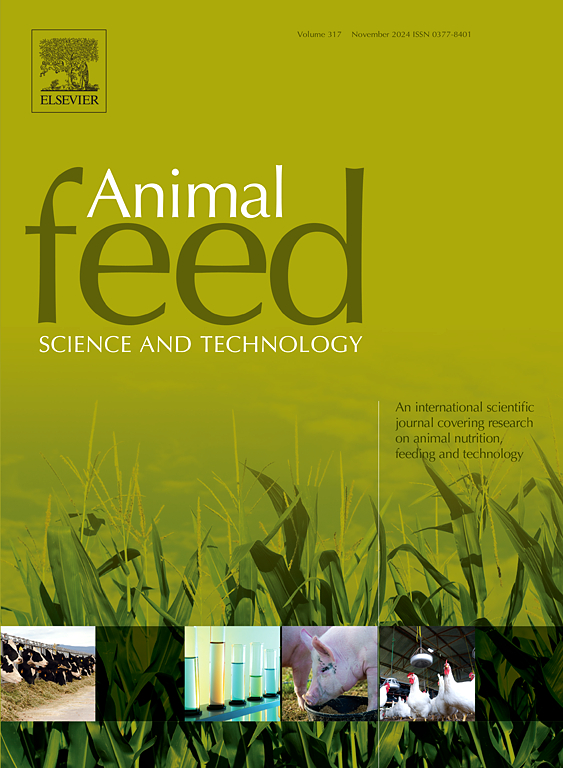Effects of feed additives in the diet of male dairy beef calves on physiological status and rumen microbial fermentation pre- and postweaning
IF 2.5
2区 农林科学
Q1 AGRICULTURE, DAIRY & ANIMAL SCIENCE
引用次数: 0
Abstract
In Spain, a large number of unweaned calves from northern Europe's dairy industry are transported for intensive beef production, which could pose health risks around weaning due to the separation from their mothers. This study evaluated the impact of including different feed additives in starter concentrate on blood parameters and rumen functional development in 112 calves at the growing farm. We hypothesized that feed additives could enhance rumen function and mitigate health risks associated with transportation and intensive management. The treatments tested, against a control diet (CTL), included: blend of essential oils from plant extracts (EO), yeast-based products (SYN) and a mix of yeast probiotics, oregano-based essential oil and sodium butyrate (MIX). Each treatment was administered during the preweaning stage, with all calves transitioning to the MIX diet postweaning. In the experiment, blood and rumen samples were collected before weaning (8 weeks old) and two months after weaning (18 weeks old) for rumen fermentation and microbial population analyses. Calves were weighed upon arrival (3 weeks), at weaning (10 weeks) and two months postweaning (18 weeks) to assess performance. Results from the experiment showed that rumen fermentation profiles remained stable with regard to volatile fatty acids (VFA) concentrations and pH, indicating effective solid feed consumption and microbial activity before weaning. Postweaning, all feed additives treatments improved rumen fermentation by increasing total VFA and lowering pH, though body weight gains remained unaffected. Concentrations of bacteria and archaea increased compared to preweaning levels, protozoa were absent, and anaerobic fungi did not become established until 2 months postweaning. In conclusion, feed additives provided preweaning improved rumen development, although they did not increase productivity. The treatment should be applied preweaning, highlighting the importance of this particular window of time.
求助全文
约1分钟内获得全文
求助全文
来源期刊

Animal Feed Science and Technology
农林科学-奶制品与动物科学
CiteScore
6.00
自引率
6.20%
发文量
266
审稿时长
3 months
期刊介绍:
Animal Feed Science and Technology is a unique journal publishing scientific papers of international interest focusing on animal feeds and their feeding.
Papers describing research on feed for ruminants and non-ruminants, including poultry, horses, companion animals and aquatic animals, are welcome.
The journal covers the following areas:
Nutritive value of feeds (e.g., assessment, improvement)
Methods of conserving and processing feeds that affect their nutritional value
Agronomic and climatic factors influencing the nutritive value of feeds
Utilization of feeds and the improvement of such
Metabolic, production, reproduction and health responses, as well as potential environmental impacts, of diet inputs and feed technologies (e.g., feeds, feed additives, feed components, mycotoxins)
Mathematical models relating directly to animal-feed interactions
Analytical and experimental methods for feed evaluation
Environmental impacts of feed technologies in animal production.
 求助内容:
求助内容: 应助结果提醒方式:
应助结果提醒方式:


